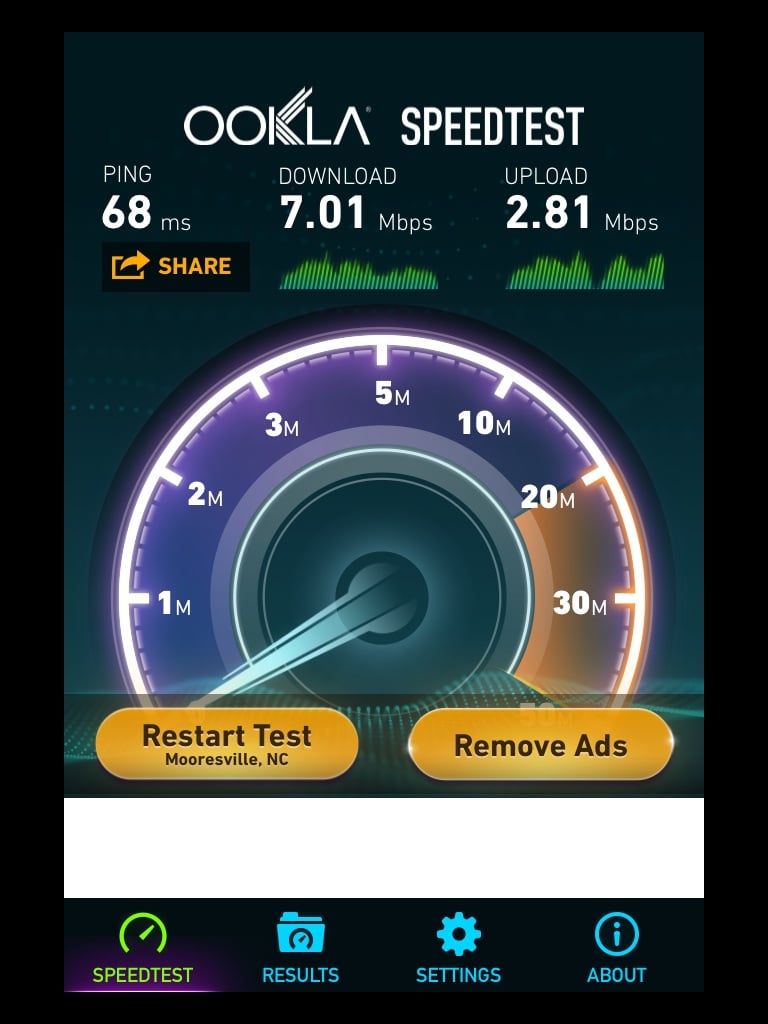

Mean upload speed on Verizon’s SSID was 12.1% slower than on the stadium’s, but Verizon’s Wi-Fi latency was also lower, showing a 22.2% improvement over stadium Wi-Fi.
#VERIZON SPEED TEST DOWNLOAD#
Verizon also provided Wi-Fi for their customers during the big game yesterday, and the mean download speed was comparable to that on the stadium’s SSID. Mean upload speed dropped 25.7% and latency was up 28.6%. Wi-Fi at the stadium did show some game day stresses yesterday, with a mean download speed 33.7% slower than the December 22 game. 5G for the winĥG is the biggest story in mobile these days, and all four operators came prepared to deliver their best game to customers with 5G-capable phones and compete for bragging rights during this high profile event.ĥG Performance at Hard Rock Stadium Speedtest ® Data | February 2, 2020 in January 2020 was 41.23 Mbps, upload was 10.55 Mbps and latency was 46 ms.

Sprint was third for latency and Verizon fourth.įor comparison, the mean download speed over mobile in the U.S. T-Mobile also had the lowest latency, coming in 26.0% faster than second-place AT&T. Upload speed is especially important at big events like this as fans try to share their game day experience with those not in the stadium. T-Mobile’s mean upload speed over all technologies was far better than competitors’. We break out 5G speeds for each operator below. Sprint was second on LTE with a mean download speed of 56.16 Mbps, AT&T third at 39.18 Mbps and Verizon fourth at 30.67 Mbps. Sprint had the third fastest mean download speed in this category and AT&T came in fourth.įocusing on their 5G game really helped Verizon take the day when considering overall speeds as T-Mobile had the fastest mean download speed (66.35 Mbps) on LTE. Sprint’s home team might have won the game, but Verizon triumphed when it came to mobile download speeds, coming in 143.7% faster than second-place T-Mobile when considering Speedtest® results over all technologies. Overall Cellular Performance at Hard Rock Stadium Speedtest ® Data | February 2, 2020 mobile operators from two hours prior to kick-off to 30 minutes after the game ended to see who won. Verizon Wireless’s download speeds beat out competitors’ These improvements came on top of investments Verizon has made in and around the stadium in the past two years.

Inside the stadium, AT&T has upgraded their distributed antenna system (DAS) to support 5G and band 14 spectrum to increase LTE capacity by 300% and support first responders.This is no ordinary sporting event, and operators have been working for many months on their playbooks for providing the best possible performance at Hard Rock Stadium. We’re here to report on which operator had the fastest speeds and the lowest latency on game day and what indoor coverage looked like in the Miami area. Every year this event presents a major challenge to mobile operators who this year added 5G to the mix. All those fans on their phones sharing the halftime experience with folks back home used massive amounts of data as they livestreamed and posted to social media. More than 65,000 people watched the Kansas City Chiefs beat the San Francisco 49ers live at the Hard Rock Stadium in Miami yesterday.


 0 kommentar(er)
0 kommentar(er)
